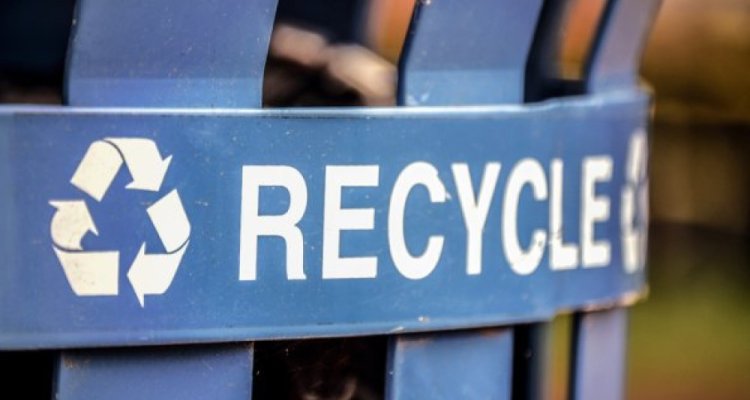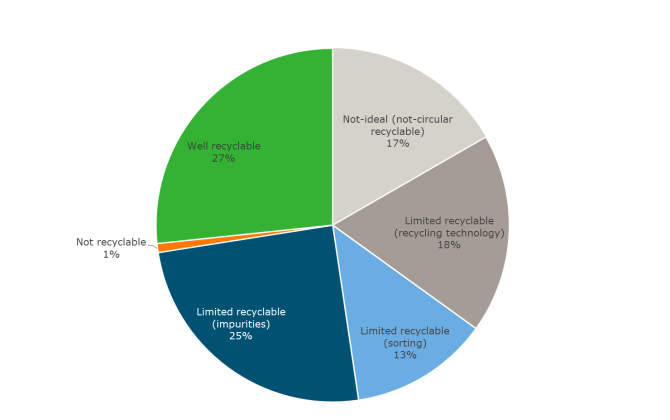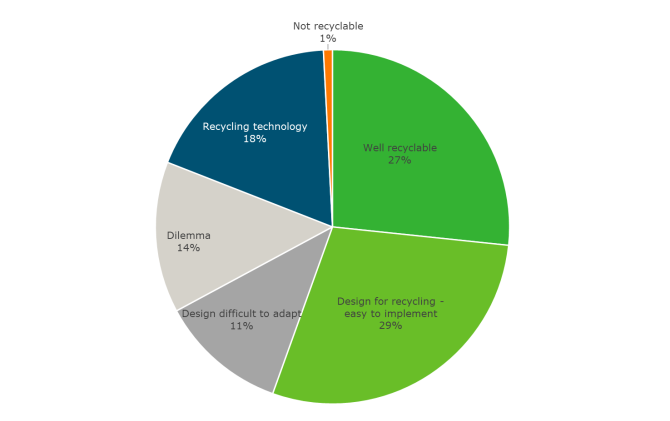
Project
The share of recyclable packaging on the Dutch market - update 2021
This study shows that only 27% of the plastic packaging on the Dutch market can easily be recycled with the current common sorting and recycling techniques.
In 2017 researchers at Wageningen Food and Biobased Research examined the recyclability of packaging on the Dutch market in 2014. The NVRD (Royal Dutch association for waste management and cleaning) wanted to know how the share of recyclable packaging had changed in the years since 2014, what the present situation is (2021) and if there are opportunities to possibly improve the value chain. So the recyclability of Dutch plastic packaging was also assessed for 2017 and 2021. Moreover, the recyclability of these packages was studied in greater detail for 2021 with a second more elaborate assessment system. This new assessment system uses different categories of recyclability in order to provide insight into why a type of packaging does not recycle well. The types of packaging that were considered ‘good for recycling’ were now assessed in more detail at the level of individual packages with regard to their design aspects that could limit recyclability. This resulted in a new estimation of the share of recyclable plastic packages on the Dutch market.
Research method
First, one sample of PMD material (plastic, metal, beverage cartons) and three samples of residual municipal solid waste from three different municipalities were studied. The plastic packages were sorted according to type of packaging (for example, PET non-beverage bottles, PP beverage bottles or PE foil). From this information, the distribution of the various types of packaging on the market was calculated. The extent of recyclability of these types of packaging was first estimated with a simple assessment method. The extent of recyclability was estimated at the level of type of packaging with no consideration given to the design aspects of the individual packages belonging to a certain type of packaging (for example, the size of the labels). This information was used to study the development between the years 2014, 2017 and 2021.
Trends between 2017 - 2021
The share of plastic packages that is difficult to recycle has decreased. The share of packages that is likely to be recyclable in the future has increased. This analysis shows that the packaging industry has taken the first steps to introduce better recyclable packaging onto the market. It is clear that the share of black rigid packaging that cannot be sorted well has decreased in the past few years. Although this is a relatively easy design-for-recycling step, it is important that this step has been taken. This study shows that plastic packages can still be greatly improved to make it generally easier to recycle. This is important in order to realise a more circular economy for plastic packaging in the decades ahead.
Categories of the recyclability of plastic packaging in the Netherlands
According to the new assessment system, the recyclability of plastic packages on the Dutch market can be rated as follows (Figure 1).
- 27% well recyclable
- 17% not ideal recyclable: these packages are currently only recyclable to a MIX recycled plastic, which cannot be used to produce new packages
- 18% limited recyclability (recycling technology): packaging for which recycling technology is expected within 5 years
- 13% limited recyclability (sorting): packaging is not suitable for current sorting techniques
- 25% limited recyclability (contamination): packaging components (such as caps and labels) cause contamination with other materials in the recycled plastics
- 1% not recyclable: packages contain a recognised pollutant such as silicone or PVC

27% of the plastic packages is well recyclable. There is currently no recycling technology for 18% of the plastic packaging; these packages can be sorted in a separate sorted product, but it cannot yet be further processed on a large scale until new developments in recycling processes occur. These are non-bottle PET (also called PET trays) and the rigid PS packaging; recycling processes for these sorts of packages are expected within five years. 13% of the packaging on the Dutch market cannot be sorted well because the packaging is too small or because they have a label that is too large. The packages with oversized labels can certainly be dealt with and made more recyclable. Lastly, 25% of the plastic packages contain materials that cannot easily be separated and that contaminate the recycled plastic. This is a very diverse group of packages including laminated film packaging, cleaning product bottles with handpumps and spray guns, butter tubs with aluminium sealing lids, etc. Recycling this group of packages can also be improved by means of design-for-recycling.
Opportunities for improvement
The recyclability of a large share (29%) of plastic packages that now has limited recyclability can be improved by design-for-recycling measures, see Figure 2. This group consists of packaging that cannot be easily sorted or that introduces contaminants into the recycled plastic. But these issues can be fixed with design for recycling. Making a quarter of the plastic packages recyclable is either impossible or involves difficult to solve dilemmas . And for 18% of the packages still a sorting and recycling process has to be developed.

- 1% Not-recyclable
- 27% Well recyclable
- 29% Design for recycling can easily be implemented
- 11% Design for recycling is currently still impossible , the designs are difficult to adapt.
- 14% Design-for-recycling will cause dilemmas
- 18% Recycling technology is currently still lacking